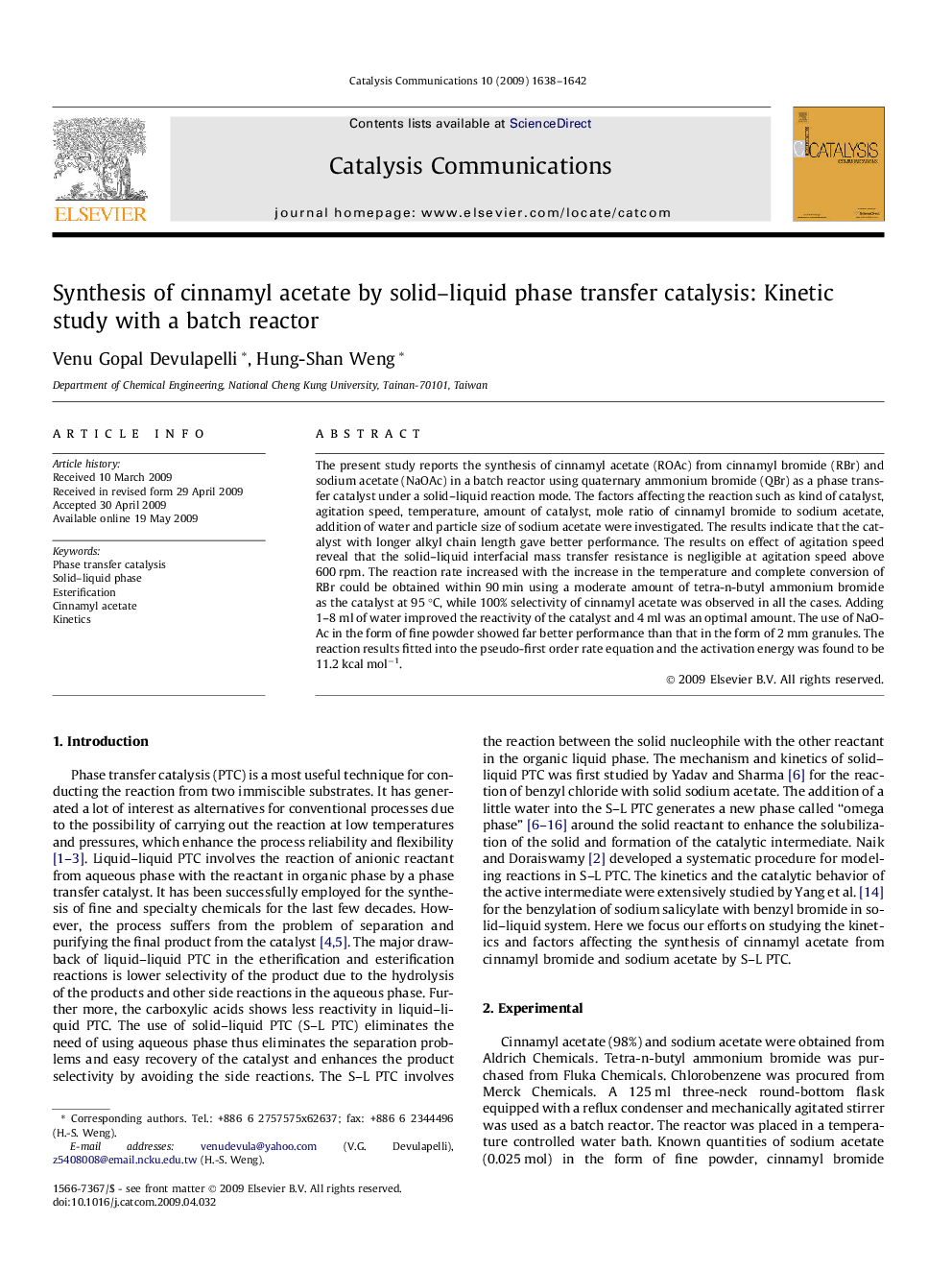| Article ID | Journal | Published Year | Pages | File Type |
|---|---|---|---|---|
| 51389 | Catalysis Communications | 2009 | 5 Pages |
The present study reports the synthesis of cinnamyl acetate (ROAc) from cinnamyl bromide (RBr) and sodium acetate (NaOAc) in a batch reactor using quaternary ammonium bromide (QBr) as a phase transfer catalyst under a solid–liquid reaction mode. The factors affecting the reaction such as kind of catalyst, agitation speed, temperature, amount of catalyst, mole ratio of cinnamyl bromide to sodium acetate, addition of water and particle size of sodium acetate were investigated. The results indicate that the catalyst with longer alkyl chain length gave better performance. The results on effect of agitation speed reveal that the solid–liquid interfacial mass transfer resistance is negligible at agitation speed above 600 rpm. The reaction rate increased with the increase in the temperature and complete conversion of RBr could be obtained within 90 min using a moderate amount of tetra-n-butyl ammonium bromide as the catalyst at 95 °C, while 100% selectivity of cinnamyl acetate was observed in all the cases. Adding 1–8 ml of water improved the reactivity of the catalyst and 4 ml was an optimal amount. The use of NaOAc in the form of fine powder showed far better performance than that in the form of 2 mm granules. The reaction results fitted into the pseudo-first order rate equation and the activation energy was found to be 11.2 kcal mol−1.
